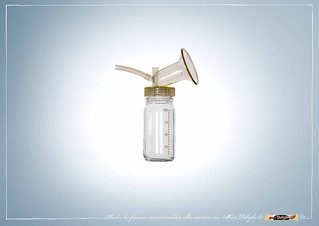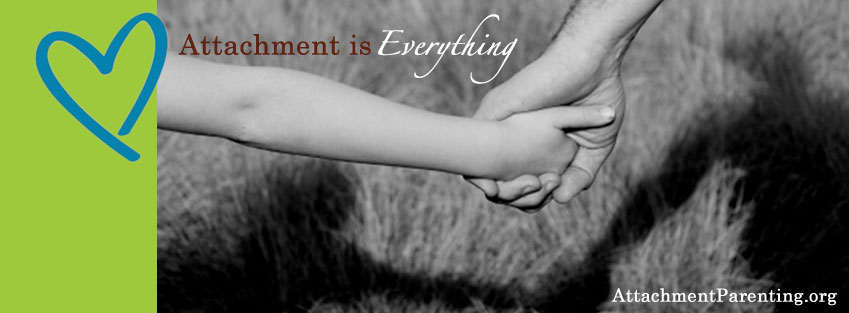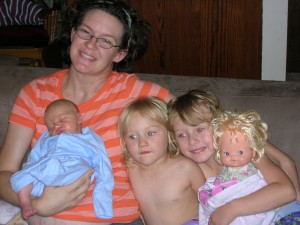
When we, Attachment Parenting International, learned that TIME Magazine decided to take on attachment parenting in its May 21, 2012 issue, we had to ask, “TIME, are you news magazine enough?”
Beyond the incendiary attempt to pit mothers against each other asking, “Are you mom enough?,” and a strategic cover contrived to sell copies, what did TIME actually say about attachment parenting?
In case you don’t get very far past the cover, here is what TIME happened to acknowledge to the world about attachment parenting:
Dr. William Sears, with Martha Sears, deserve recognition for changing the course of parenting and giving parents The Baby Book 20 years ago. Dr. Sears is noted by TIME as “The Man Who Remade Motherhood” and author of many parenting books, including The Baby Book: “First published in 1992, The Baby Bookis now in print in 18 languages, with more than 1.5 million copies sold.”
Attachment parenting is changing how we parent: “Chances are also good that, consciously or not, you’ve practiced some derivative of attachment parenting or been influenced by its message that mothers and babies evolved to be close to each other.”
“Fans and critics of attachment parenting can agree on two things: there has been a sea change in American childrearing over the past 20 years, and no one has been a more enthusiastic cheerleader for it than Sears.”
“So many of the ideas of attachment parenting are in the culture even if you don’t believe in Dr. Sears per se,” says Pamela Druckerman , author of Bringing Up Bébé.
“[Attachment parenting] is a new common sense.”
(TIME, The Man Who Remade Motherhood, Kate Pickert)
Nurturing touch fosters security: “…it’s hard to argue with his overall message that babies who are cuddled feel secure.”
Breastfeeding promotes bonding: “He surely deserves credit for promoting breastfeeding and the idea that the bond between mother and baby is critical.”
Consistent and loving care is key: “The difference between children without consistent relationships with parents (or parental figures of any kind) and well-parented children who are fed formula (instead of breastmilk) and put in bouncy seats (instead of slings) is huge. The former, science says, are headed for developmental and emotional problems.”
Fathers are not incidental to attachment parenting: “Much of Sears’ instruction for fathers revolves around the supportive role they can play for their wives.” “Sears also encourages “attachment fathering,” pointing out that dads can wear their babies just as well as mothers.”
Many AP moms work outside the home: “[Sears] says about 60% of mothers with children in his pediatric practice work outside their homes, and indeed, some career mothers are drawn to an attachment parenting model that helps them get close to their babies when they finally come home from work.”
(TIME, The Man Who Remade Motherhood, Kate Pickert)
Breastfeeding beyond infancy is … natural: “In 2008, the American Academy of Family Physicians did its part to try to destigmatize nursing toddlers and older children, applauding the WHO guidelines even as it acknowledged that extended breastfeeding “is not the cultural norm in the United States and requires ongoing support and encouragement.” The group added: It has been estimated that a natural weaning age for humans is between two and seven years. Family physicians should be knowledgeable regarding the ongoing benefits to the child of extended breastfeeding, including continued immune protection, better social adjustment and having a sustainable food source in times of emergency. The longer women breastfeed, the greater the decrease in their risk of breast cancer. There is no evidence that extended breastfeeding is harmful to mother or child.”
(TIME, Extended Breast-Feeding: Is It More Common than We Think?, Bonnie Rochman)
Weaning happens naturally: “So I rarely had to contend with strangers’ stares because the older my kids got, the less they nursed. That’s the normal progression of things – it’s how weaning is ideally supposed to work.”
(TIME, Extended Breast-Feeding: Is It More Common than We Think?, Bonnie Rochman)
Attachment parenting advocates societal change to accommodate family wellbeing: “More power to all of us. Let’s not blame our breasts for the other societal issues – like unequal pay, lack of daycare and having to protect our babies from toxins – that are holding us back.”
(TIME, Why Breast-Feeding Isn’t the Bugaboo, Dominique Browning)
Greater acceptance of nursing, including in public, helps families meet their babies’ needs: The world wonders what the discussion is: “But much of the world doesn’t share America’s uneasiness. The World Health Organization (WHO) recommends breast-feeding up to a child’s second birthday ‘or beyond.’ Most U.S. mothers don’t even meet the recommendation made by the American Academy of Pediatrics and the U.S. Surgeon General that they skip infant formula and breast-feed exclusively for a mere six months.”
(TIME, Extended Breast-Feeding: Is It More Common than We Think?, Bonnie Rochman)
Parenting with intention may be healing and address unresolved needs: “Our parenting preferences matter deeply to us – they boost our self-esteem, or perhaps soothe and heal us from having been parented in a way that didn’t meet our needs.”
(TIME, “Parents Do What’s Right for Them,” Judith Warner)
There is value in being responsive to infant cries. We know responding will not spoil an infant. So if the research on “cry it out” is not conclusive, no need to support ignoring cries and the parent urge to respond, in lieu of building trust and a stronger relationship, and relying on support if needed. After finding in his research the science behind Dr. Sears’ work lacking, Jeffrey Kluger does acknowledge: “None of this means that Sears’ larger philosophy of attachment parenting is fatally flawed – as his millions of believers and their happy, well-adjusted babies would surely attest.”
(TIME, The Science Behind Dr. Sears: Does it Stand Up?, Jeffrey Kluger)
Attachment Parenting holds up to scrutiny: “[Mothers] research; they seek out best practices; they join a group, form a committee and agitate for their version of feeding/disciplining/sleeping. If you don’t believe me, just visit a breast-feeding support group with former litigators, marketing executives and investment bankers.”
(TIME, How Feminism Begat Intensive Mothering, Belinda Luscombe)
Parents are actively advancing the field of parenting; the sciences of development and attachment are affirming their parenting instincts: “We’ve educated women to forge a new path. Why did we think they’d treat raising children any differently?”
(TIME, How Feminism Begat Intensive Mothering, Belinda Luscombe)
Balance and support are essential to parenting: “Sears tells mothers, “Do the best you can with the resources you have”; he tells husbands to book massages for their wives and shoo them out of the house so they can get a break from parenting.”
(TIME, The Man Who Remade Motherhood, Kate Pickert)
This TIME magazine issue does have parents reading between the lines, pleased to discover the attachment parenting name to what they’ve been practicing.
We certainly don’t expect Attachment Parenting International promotional material from TIME magazine, so the work remains to shift culture to responsive and compassionate parenting, and to make clarifications as needed:
Attachment parenting is motivated by a desire to raise well adjusted, strong, independent children, as parents meet the trust and other emotional needs of the child from the very start and it’s not the case that: “…it’s more about parental devotion and sacrifice than about raising self-sufficient kids.”
(TIME, The Man Who Remade Motherhood, Kate Pickert)
The essence of attachment parenting is loving care that features a reciprocal, relational approach that goes deeper than this simple formula: “The three basic tenets are breast-feeding (sometimes into toddlerhood), co-sleeping (inviting babies into the parental bed or pulling a bassinet alongside it) and “baby wearing,” in which infants are literally attached to their mothers via slings.”
(TIME, The Man Who Remade Motherhood, Kate Pickert)
“Attachment parenting is in many ways the practical application of my father’s theory,” writes Sir Richard Bowlby Bt., who “lectures to promote a much broader understanding of his father’s work [Dr. John Bowlby] on attachment theory,” in his endorsement of API co-founders’, Barbara Nicholson and Lysa Parker, book Attached at the Heart: Eight Proven Parenting Principles for Raising Connected and Compassionate Children, just to begin addressing the criticism that “The science on attachment is also easily misunderstood and misused. The father of attachment theory is John Bowlby, a British psychoanalyst who in the mid – 20th century studied orphans and children abandoned by their mothers.”
(TIME, The Man Who Remade Motherhood, Kate Pickert)
There is nothing that prohibits a parent who works from incorporating the heart of relationship with attachment parenting. Perhaps they may elect to breastfeed or bottlenurse; babywear; or cosleep safely (not necessarily in the adult bed) to get more sleep; and at least nurture their child without spanking or shaming; and respond with sensitivity most of the time. Many find attachment parenting makes parenting and working more compatible, not “impossibly demanding” as Judith Warner perceives: “That’s why William Sears, for all his insistence on flexibility and admonitions to ‘do the best you can with the resources you have,’ strikes so many of us as impossibly demanding for any woman who wants or simply needs to keep out-of-home work a viable part of her life.”
(TIME, “Parents Do What’s Right for Them,” Judith Warner)
Yes, the AP crowd is on average pretty well educated, but it isn’t affluence that determines their choices — many continue to make financial sacrifices based on what science (and their own hearts) say is best for their children.“The affluent, slightly older and well educated moms who are most likely perusing parenting books like those written by William Sears have already tasted financial independence, self-sufficiency and freedom of movement.”
(TIME, “Parents Do What’s Right for Them,” Judith Warner)
We welcome TIME Magazine giving attachment parenting a public platform for discussion. For many years we have been witnessing a silent transition of the mainstream culture to attachment parenting–not extremism, as parents experience the benefits of parenting compassionately and become more confident in trusting their instincts.
TIME, the blame for mother guilt does not lie with attachment parenting or with any other type of parenting philosophy or culture — the complexity and balancing act of motherhood, encompassing mommy guilt or even typical healthy doubt as we navigate our way, existed before attachment parenting resurfaced. In fact, while TIME perpetuates the idea of an epidemic of immobilizing mommy guilt, moms of every stripe are in no uncertain terms countering, “Yes, we are mom enough.” AP brings balance and self-acceptance to mothers, embracing our imperfections and even recognizing how the repairs we make with our children strengthen and grow the attachment relationship. Now, we must move past the misconceptions and myths some of the conversation is dominated by and collectively think of the future we are raising.
Attachment parenting has a pedigree that goes to the beginning of history, rooted in a theory that has 60 years of formal research behind it, and 20 years of reclaiming our parenting instincts from disproven constructs of baby training and ignoring infant cries. If examined without bias and preconceptions, TIME may well one day report on attachment parenting as a “new” scientific discovery. The front cover and title would hail attachment parenting as the next life-changing advancement in society that benefits children, mothers, fathers, families, and society; but it’s enough for now.
Attachment Parenting International
www.attachmentparenting.org


 Hello parents! The cover was risky but a brilliant hook by Time Magazine to attract readers, and they achieved their goal. The writer, Kate Pickert, herself a new mother and one of Time’s most diligent writers, sincerely wanted to increase awareness of the Sears’ family contribution to parenting and family health. She lived with our family for two days, followed me in the office, and spent hours with me on the phone in an attempt to be factual. While the cover photo is not what I or even cover-mom Jamie would have chosen, it accomplished the magazine’s purpose. And, as some attachment dads observed, finally a magazine displays a woman’s breast for the real purpose for which they were designed – to nurture a child, not to sell cars and beer. Cover-mom Jamie is a super-nice person and highly-educated in anthropology, nutrition and theology. I enjoyed the several hours I spent with her family and her kids shined with the social effects of attachment parenting.
Hello parents! The cover was risky but a brilliant hook by Time Magazine to attract readers, and they achieved their goal. The writer, Kate Pickert, herself a new mother and one of Time’s most diligent writers, sincerely wanted to increase awareness of the Sears’ family contribution to parenting and family health. She lived with our family for two days, followed me in the office, and spent hours with me on the phone in an attempt to be factual. While the cover photo is not what I or even cover-mom Jamie would have chosen, it accomplished the magazine’s purpose. And, as some attachment dads observed, finally a magazine displays a woman’s breast for the real purpose for which they were designed – to nurture a child, not to sell cars and beer. Cover-mom Jamie is a super-nice person and highly-educated in anthropology, nutrition and theology. I enjoyed the several hours I spent with her family and her kids shined with the social effects of attachment parenting.





